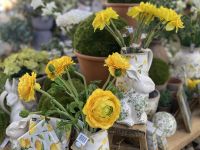Pip and Stone Fruit
A 5 minute read by Peter Worsp
Once upon a time fruit trees could be found in every New Zealand garden. Nowadays gardens are smaller and it is difficult to find space, but if you choose carefully they can fit. There are dwarf forms / varieties of most fruits which don’t take a lot of space. These can be espaliered on a fence as space savers. This allows a collection of many fruits spread through the season.
At a Glance
- Warm, sunny site
- Choose fruits and varieties best suited to your area
- Feed and water
Pip fruit such as apples and pears have always been the most popular fruit because of their universal appeal, easy to eat, and ripen over a long season. They are vitamin rich, great tasting, and are relatively easy to grow. They are also very attractive trees with their spring blossom.
Stone fruit such as cherries, apricots, peaches, nectarines and plums, are also favourites with the great variety of taste.
Stone fruit does not keep as long as pip fruit, but with the many varieties giving a spread of maturity, it is possible to plan a spread of harvest dates.
Dwarf varieties of most fruits are now available which are ideal where space is limited.
Where to Plant
Choose a warm sunny position, sheltered from strong winds. Pip and stone fruit trees will grow in most soils, but in clay soils, raise plantings and add lots of compost.
When to Plant
Pip and stone fruit trees are most commonly available in winter as bare root plants.
But more and more varieties are available from autumn onwards for most of the year as they are container grown. Whilst winter is the main planting season, they can be planted at other times provided they are watered regularly.
Mulching
This is a highly recommended practice as it suppresses weeds and conserves moisture in the soil. A layer of mulch, compost or similar laid on the surface in October will prevent moisture loss and greatly benefit the trees.
After Care
Feeding
Fruit trees benefit from an annual dressing of lime or gypsum, in August, followed by an application of Tui General or Citrus & Fruit Tree Fertiliser in September.
Watering
Many fruit trees can withstand considerable dry periods, but watering will greatly improve the result.
Pests and Diseases
There are a number of pests and diseases that attack fruit trees. If particular pests and diseases are very prevalent in your area it may pay to choose different fruits that are not affected.
- Apples, pears and quinces are attacked by codling moth, aphids, mites, black spot and powdery mildew. Some new varieties are black spot tolerant
- Stone fruits (peaches, plums, nectarines and apricots), are attacked by oriental fruit moth, aphids, leaf curl, brown rot, shot hole and rust
Most diseases are minimised with a winter clean up copper and oil spray, followed by early season sprays of fungicide prior to and just after flowering.
See the spray programme below, or for more information refer to the Pest & Disease chart.
Pip Fruit Spray Programme
| Dormant | FreeFlow Copper + Enspray99 |
| Bud swell | FreeFlow Copper + Enspray99 |
| Pink (prior to flowering) | Fungus Figther |
| Full bloom | Fungus Figther |
| Petal fall | Fungus Fighter + Success Naturalyte |
| Three weeks after petal fall | Fungus Fighter + Success Naturalyte |
| Three week intervals | Repeat Maverick |
Yates Stone Fruit Spray Programme
| Dormant | FreeFlow Copper + Enspray99 |
| Bud swell | FreeFlow Copper + Enspray99 |
| Bud burst | FreeFlow Copper + Enspray99 + Mavrik |
| Full bloom | Mavrik |
| Petal fall | Success Naturalyte |
| Three weeks after petal fall | Success Naturalyte |
Pruning
Pruning is divided into two stages.
- Pruning to shape in the young stages
- Pruning for continuous fruiting and maintaining shape of established trees
Pruning to shape is dependant on the variety and to some extent the shape you want. Basically there are three shapes.
- Vase shape - the traditional open centre with 3 to 4 main leaders for framework
- Central leader or pyramid - a more modern method as it takes less space and trees can be kept narrow. Ballerina apples are very suited to this method
- Espalier - an ideal method of training and pruning where space is limited
Once you have decided on which shape you want you prune to achieve that. Always remember that the strongest new growth will come from the first bud below where the pruning cut is made
Pruning for continuous fruiting is important once the tree has established. This is relatively easy once you know where the fruit will form.
- Apples, pears, quinces, plums, and apricots fruit on the same spurs for several years. New spurs form as old ones die
- Peaches and nectarines fruit on one year old wood. That is, the wood grown last year will carry fruit this year. Hence when pruning do not cut this wood out, but shorten it only, or remove only some of it
Pollinators
Many plums, and some cherries and apricots require another variety to be grown near by to ensure pollination. Check with our garden centre advisor for pollinator varieties.

